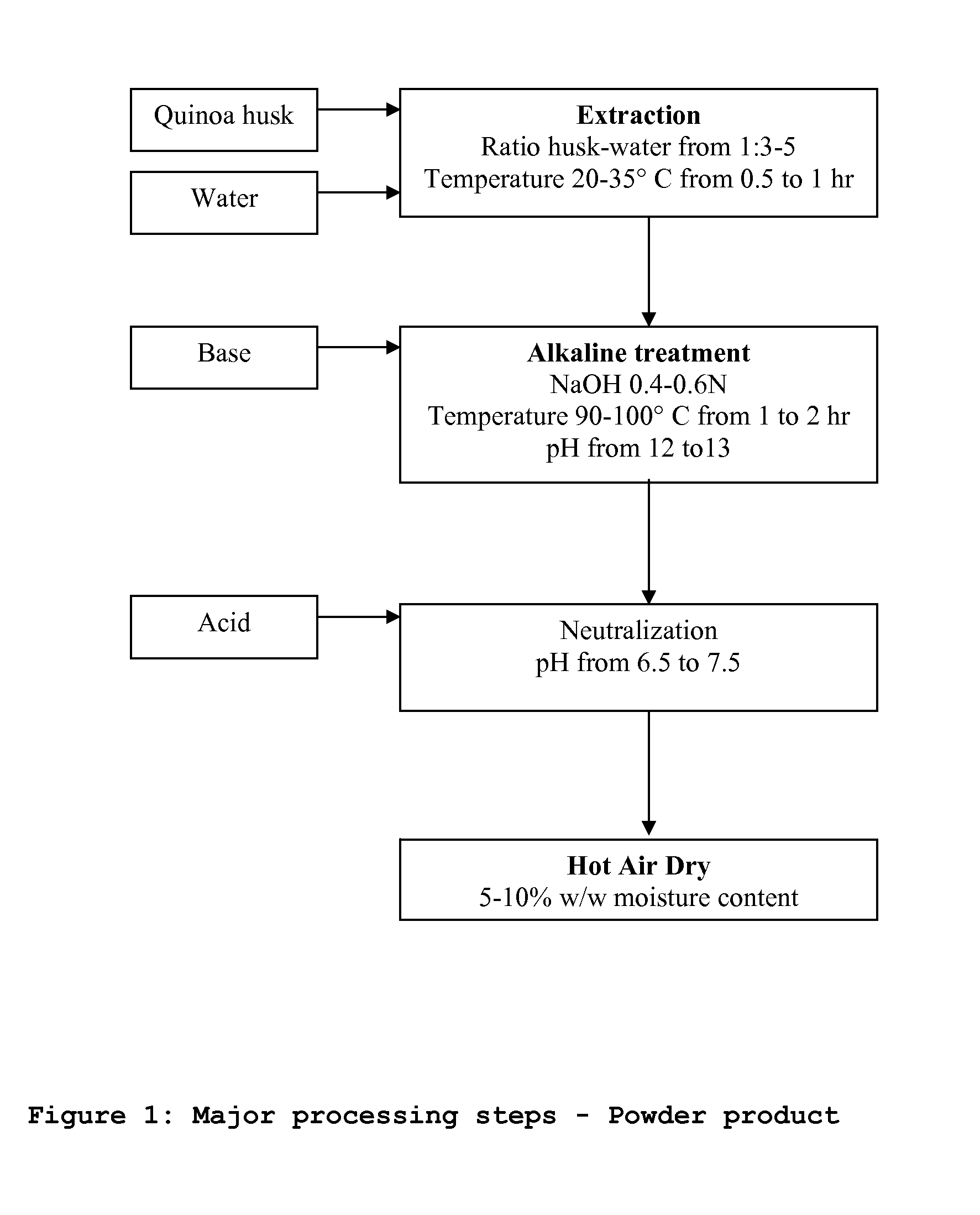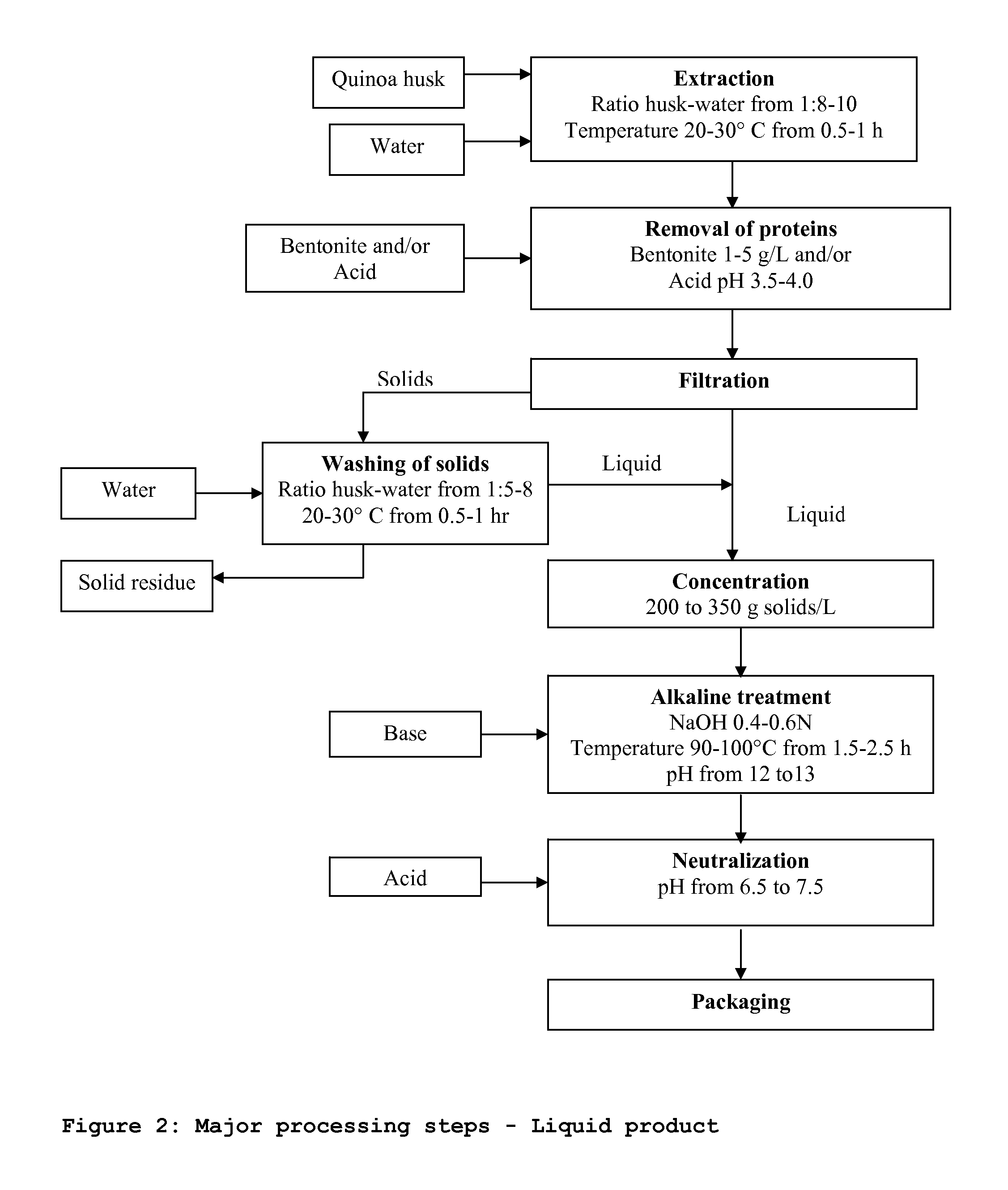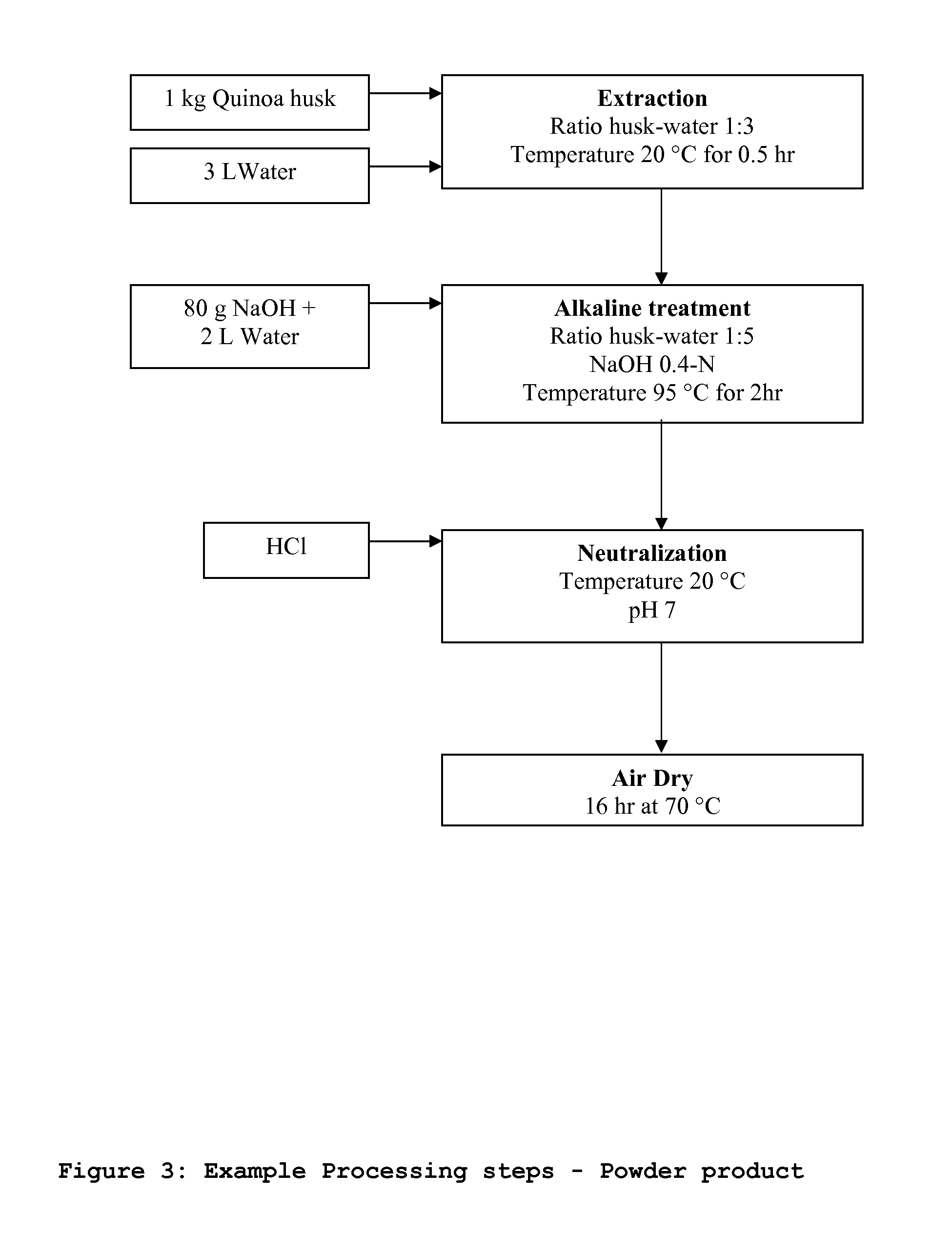Modified Saponin Molluscicide
a saponin molluscicide and modified technology, applied in the direction of biocide, plant/algae/fungi/lichens ingredients, animal husbandry, etc., can solve the problems of snails escaping, becoming a serious threat to rice production and the environment, and escaping snails
- Summary
- Abstract
- Description
- Claims
- Application Information
AI Technical Summary
Benefits of technology
Problems solved by technology
Method used
Image
Examples
example 1
Preparation of Powder Type Product and Saponin Analysis
[0163] One kg of husks of quinoa real (origin: Bolivia) were contacted in a tank with 3 L of water. The mixture was stirred for 30 min at room temperature. Then 80 g of NaOH were dissolved in 2 L of water and added to the mixture. The final soda concentration was 0.4 N (80 g of soda in 5 L of water, molecular weight of NaOH: 40 g / gmol. This mixture was stirred at 95° C. for 2 hours. After completion of the reaction, the mixture was cooled at room temperature and neutralized with HCl (final pH 7.0).The mixture was air dried for 16 hours at 70° C. (see FIG. 3).
[0164] The saponin content in the raw material was estimated using reverse phase HPLC based on the method developed for Quillaja saponaria Molina triterpenic saponins (San Martin and Briones, 2000), using a Waters 600 equipment and UV detection at 210 nm. This analysis was also used to assess the extent of the alkaline treatment. Aqueous extracts for analysis were prepared...
example 3
Effect of Products on Golden Apple Snails and Fish
[0172] Product toxicology in snails was assessed with golden apple snails (Pomacea canaliculata) from Argentinean origin. Quinoa husks and the powder type product described in Example 1 was used. For this purpose, 20-35 mm adult snails were used. The snails were maintained in 25×20×15 cm. glass aquaria with lids. Each aquarium was filled with 2.5 L of tap water, previously treated with a chlorine neutralizing product. The snails were kept at about 22° C. using electrical heaters (3 Watt resistance). The pH was about 7.5. Before starting the tests, the snails were acclimatized to lab conditions for a week, receiving aquarium fish feed flakes every 12 h. Four snails were placed in each aquarium and each experiment was carried out in triplicate. Snail mortality was assessed by stimuli with a stainless steal needle and detection or lack of movement. After 24 h, snails classified as dead were placed in a separate container with fresh wat...
PUM
| Property | Measurement | Unit |
|---|---|---|
| Temperature | aaaaa | aaaaa |
| Temperature | aaaaa | aaaaa |
| Temperature | aaaaa | aaaaa |
Abstract
Description
Claims
Application Information
 Login to View More
Login to View More - R&D
- Intellectual Property
- Life Sciences
- Materials
- Tech Scout
- Unparalleled Data Quality
- Higher Quality Content
- 60% Fewer Hallucinations
Browse by: Latest US Patents, China's latest patents, Technical Efficacy Thesaurus, Application Domain, Technology Topic, Popular Technical Reports.
© 2025 PatSnap. All rights reserved.Legal|Privacy policy|Modern Slavery Act Transparency Statement|Sitemap|About US| Contact US: help@patsnap.com



